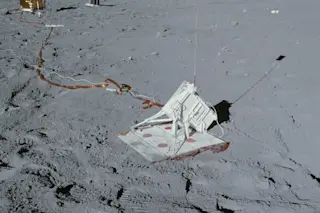Apollo astronauts did a lot when they made it to the moon in the 1960s and 70s. They drove cars, they hit golf balls, they planted flags, they ran experiments and they launched mortars … wait, what? Yes, those NASA astronauts not only brought mortars and explosives to the Moon, they used them during Apollo 16 and 17 stays on the lunar surface. However, before you think we were testing military defenses in case of alien (or Russian) incursion, these explosions were all in the name of science.
So, why on Earth did they need explosives on the Moon? It was all about discovering the structure of the Moon’s interior. We know the layers of the Earth — the crust, mantle and core — mostly through understanding how seismic waves move through our planet. The seismic waves (p- and s-waves, defined by the style of motion of the wave) move ...














